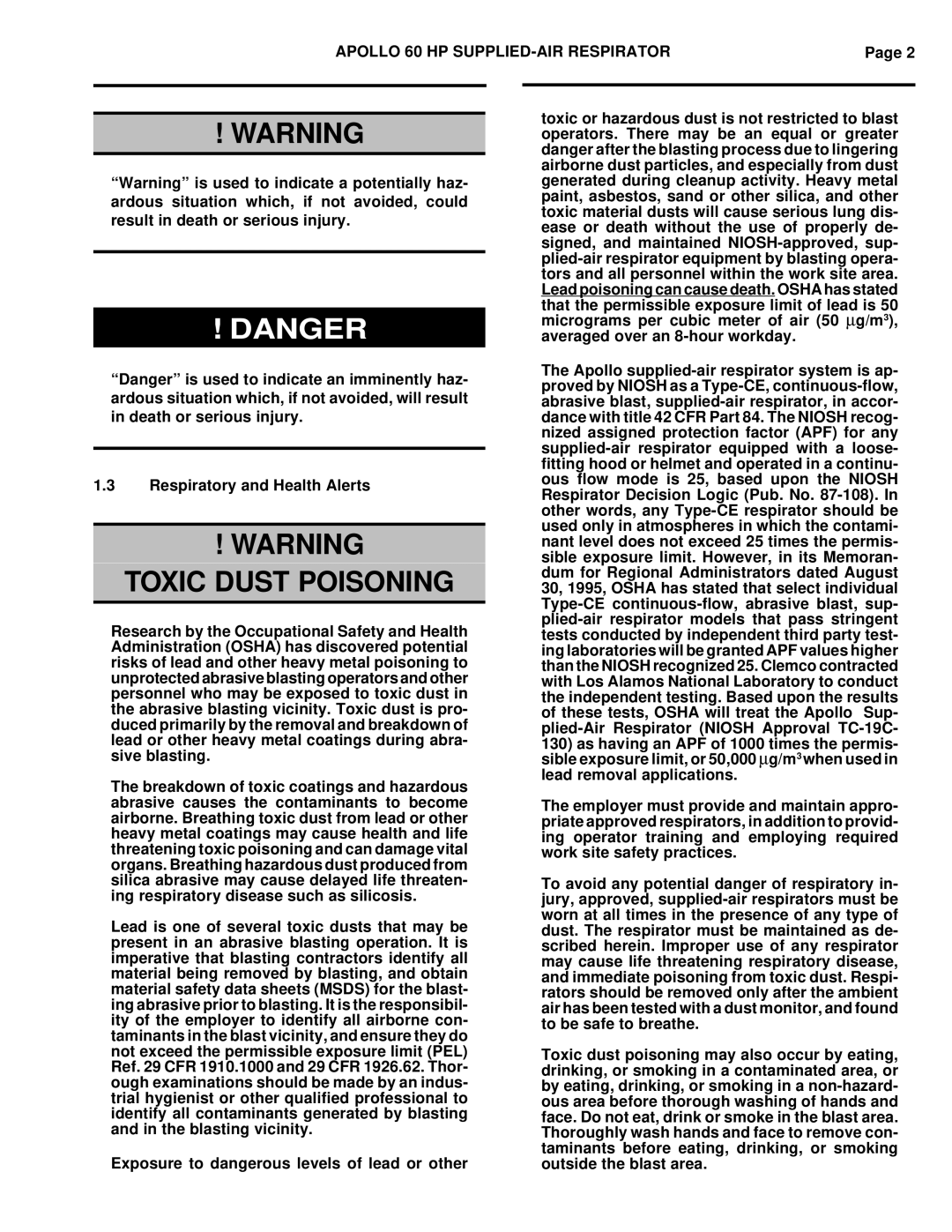
APOLLO 60 HP | Page 2 | ||
|
|
|
|
! WARNING
“Warning” is used to indicate a potentially haz- ardous situation which, if not avoided, could result in death or serious injury.
! DANGER
“Danger” is used to indicate an imminently haz- ardous situation which, if not avoided, will result in death or serious injury.
1.3Respiratory and Health Alerts
!WARNING TOXIC DUST POISONING
Research by the Occupational Safety and Health Administration (OSHA) has discovered potential risks of lead and other heavy metal poisoning to unprotected abrasive blasting operators and other personnel who may be exposed to toxic dust in the abrasive blasting vicinity. Toxic dust is pro- duced primarily by the removal and breakdown of lead or other heavy metal coatings during abra- sive blasting.
The breakdown of toxic coatings and hazardous abrasive causes the contaminants to become airborne. Breathing toxic dust from lead or other heavy metal coatings may cause health and life threatening toxic poisoning and can damage vital organs. Breathing hazardous dust produced from silica abrasive may cause delayed life threaten- ing respiratory disease such as silicosis.
Lead is one of several toxic dusts that may be present in an abrasive blasting operation. It is imperative that blasting contractors identify all material being removed by blasting, and obtain material safety data sheets (MSDS) for the blast- ing abrasive prior to blasting. It is the responsibil- ity of the employer to identify all airborne con- taminants in the blast vicinity, and ensure they do not exceed the permissible exposure limit (PEL) Ref. 29 CFR 1910.1000 and 29 CFR 1926.62. Thor- ough examinations should be made by an indus- trial hygienist or other qualified professional to identify all contaminants generated by blasting and in the blasting vicinity.
Exposure to dangerous levels of lead or other
toxic or hazardous dust is not restricted to blast operators. There may be an equal or greater danger after the blasting process due to lingering airborne dust particles, and especially from dust generated during cleanup activity. Heavy metal paint, asbestos, sand or other silica, and other toxic material dusts will cause serious lung dis- ease or death without the use of properly de- signed, and maintained
The Apollo
130)as having an APF of 1000 times the permis- sible exposure limit, or 50,000 μg/m3 when used in lead removal applications.
The employer must provide and maintain appro- priate approved respirators, in addition to provid- ing operator training and employing required work site safety practices.
To avoid any potential danger of respiratory in- jury, approved,
Toxic dust poisoning may also occur by eating, drinking, or smoking in a contaminated area, or by eating, drinking, or smoking in a
